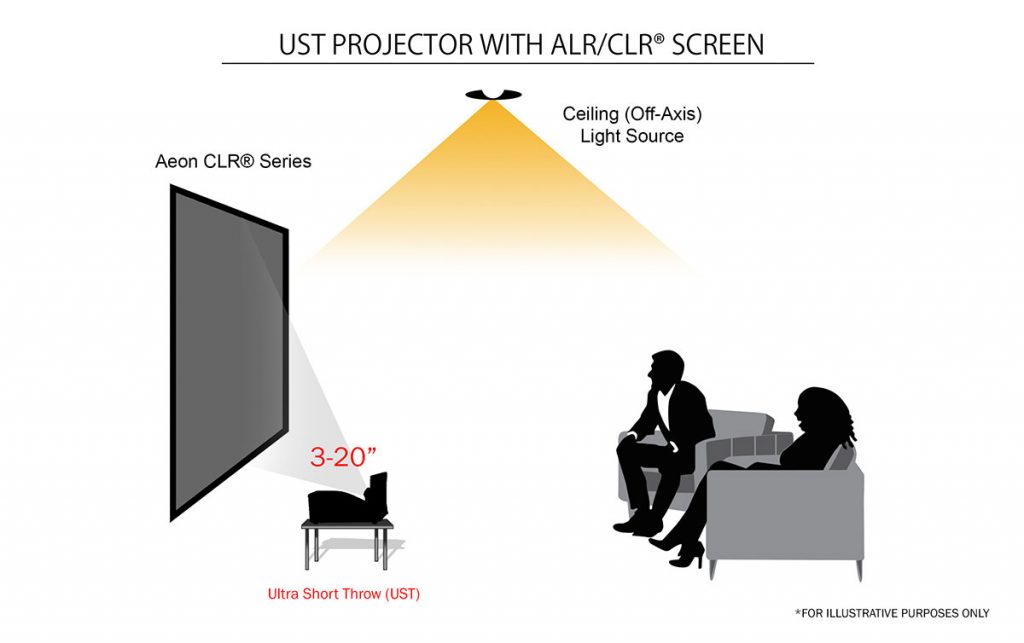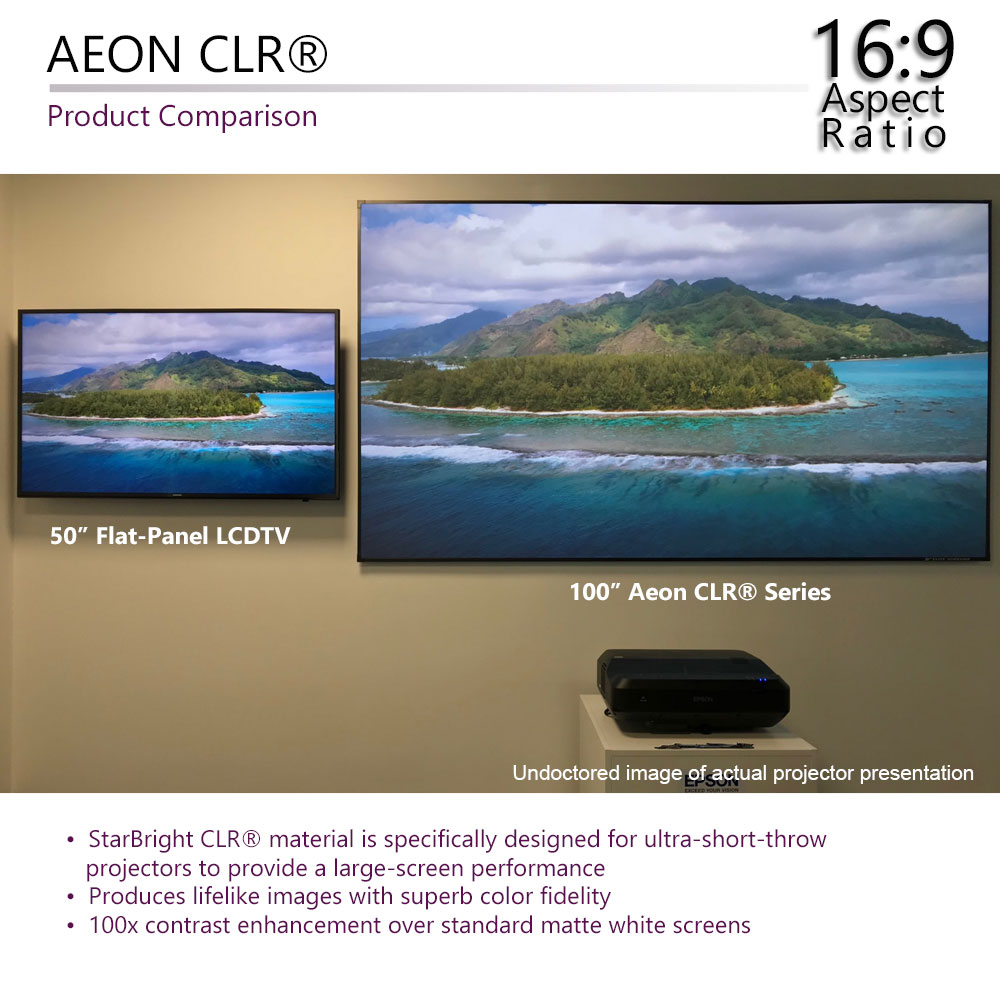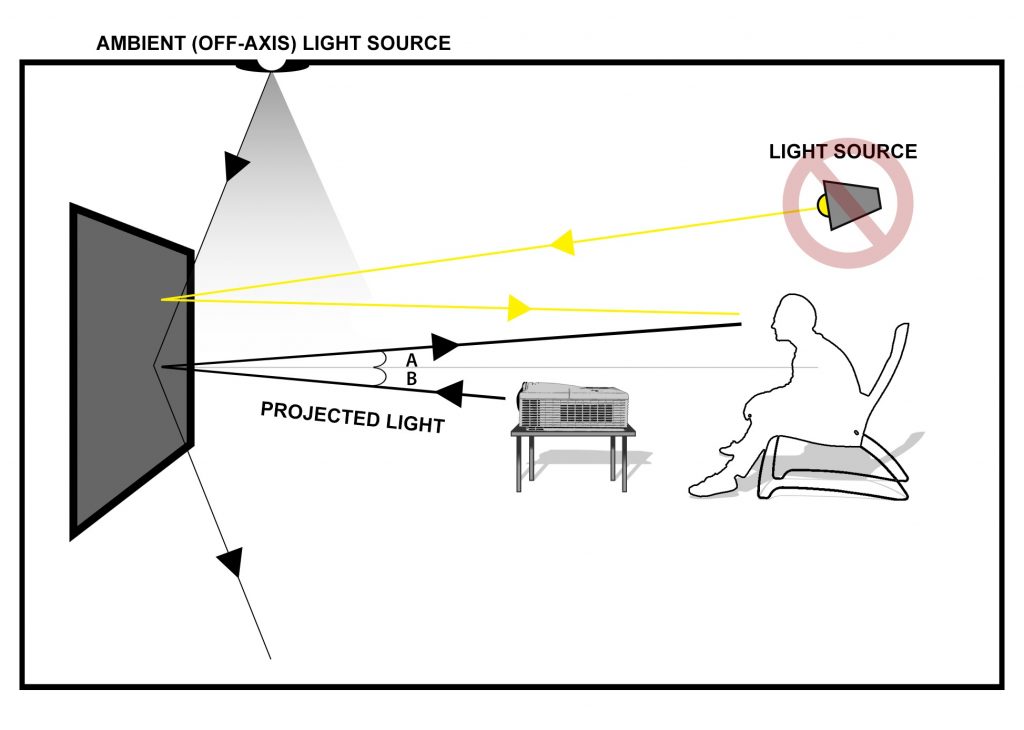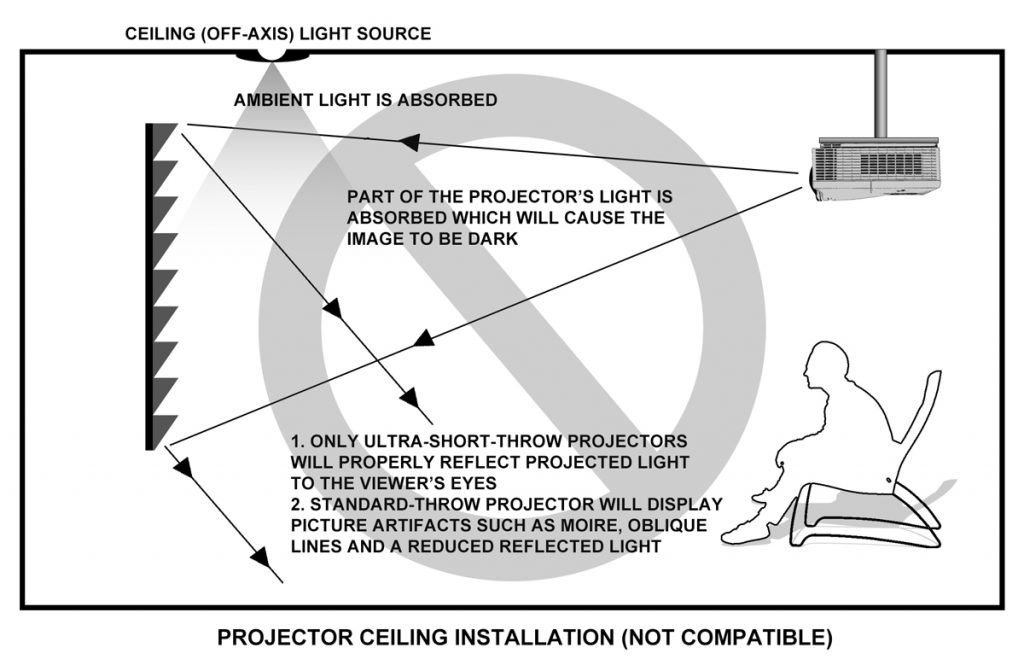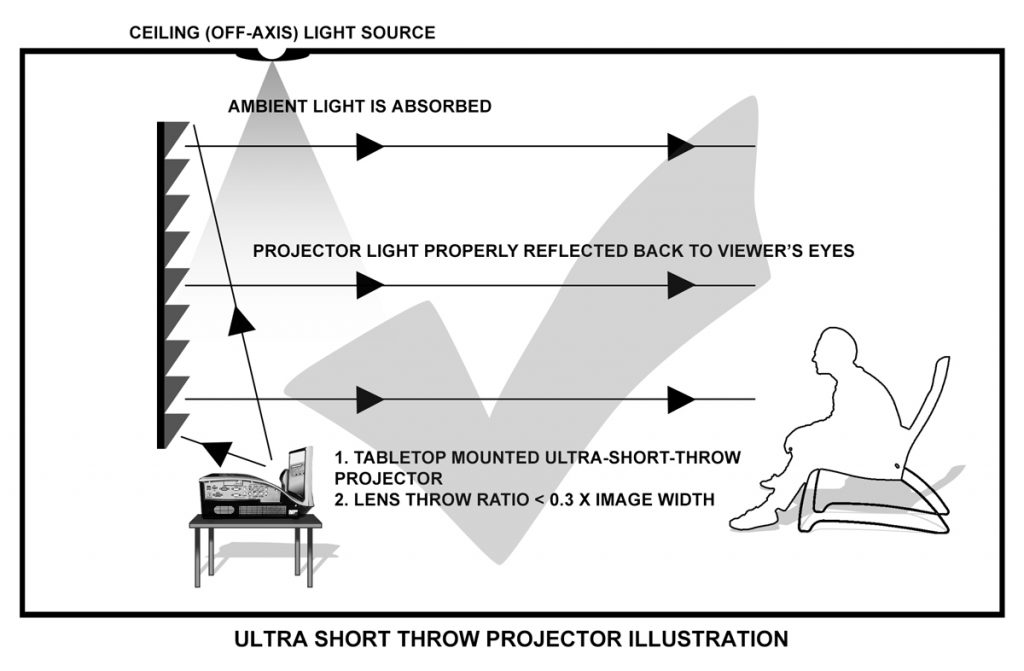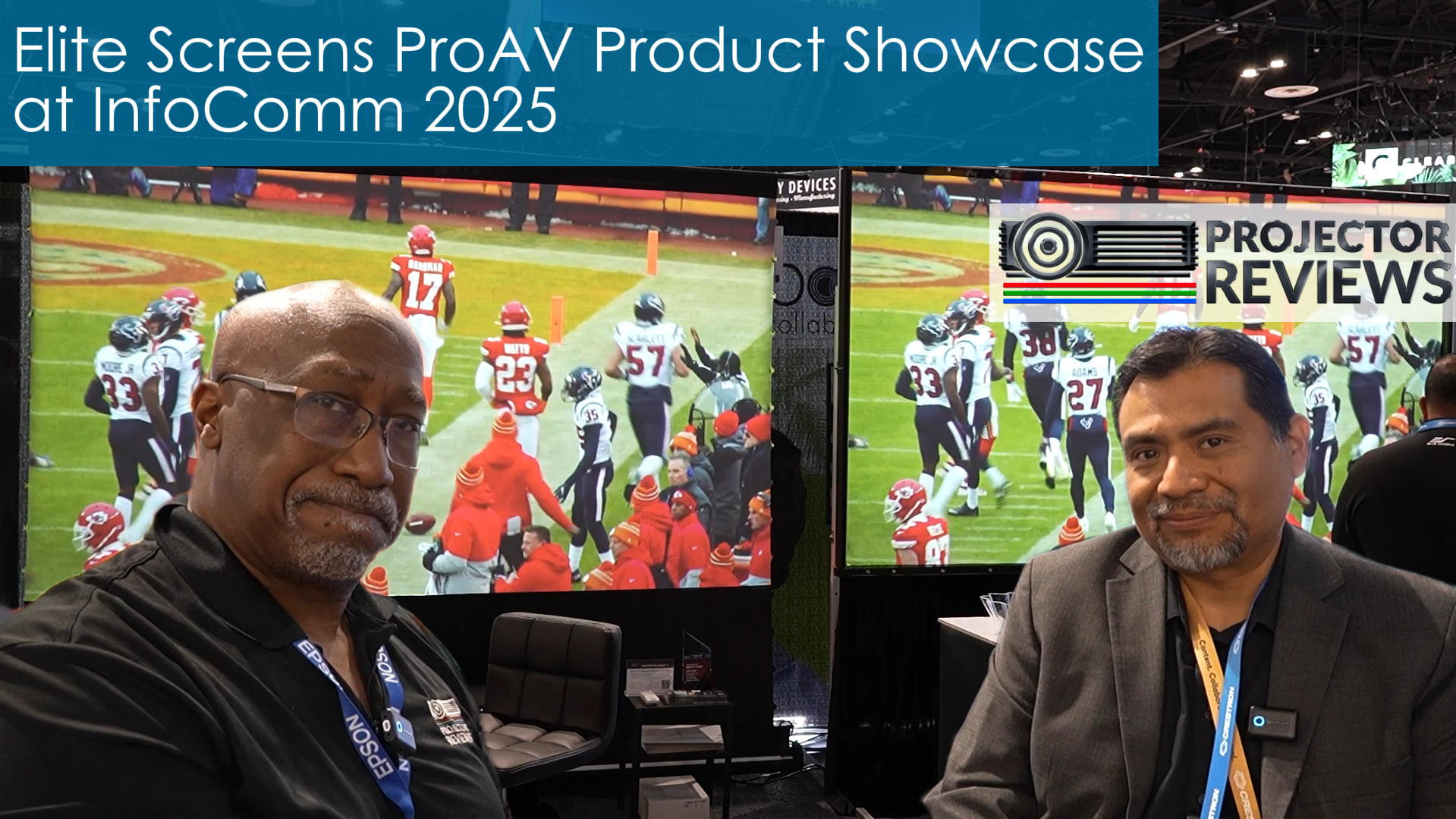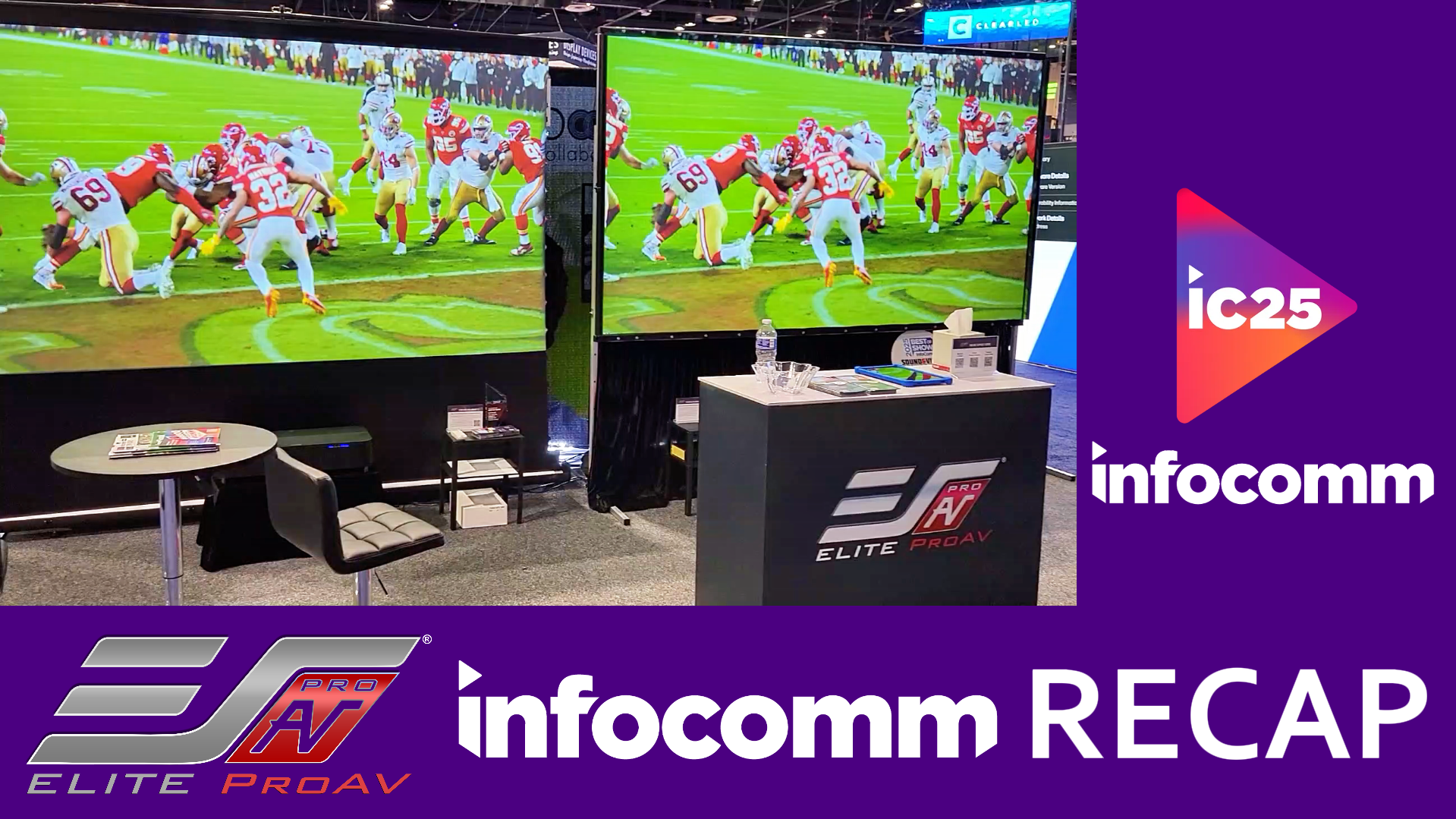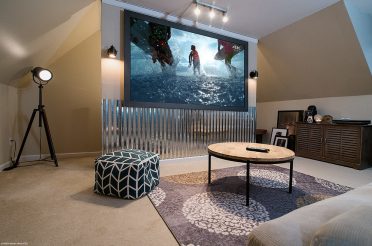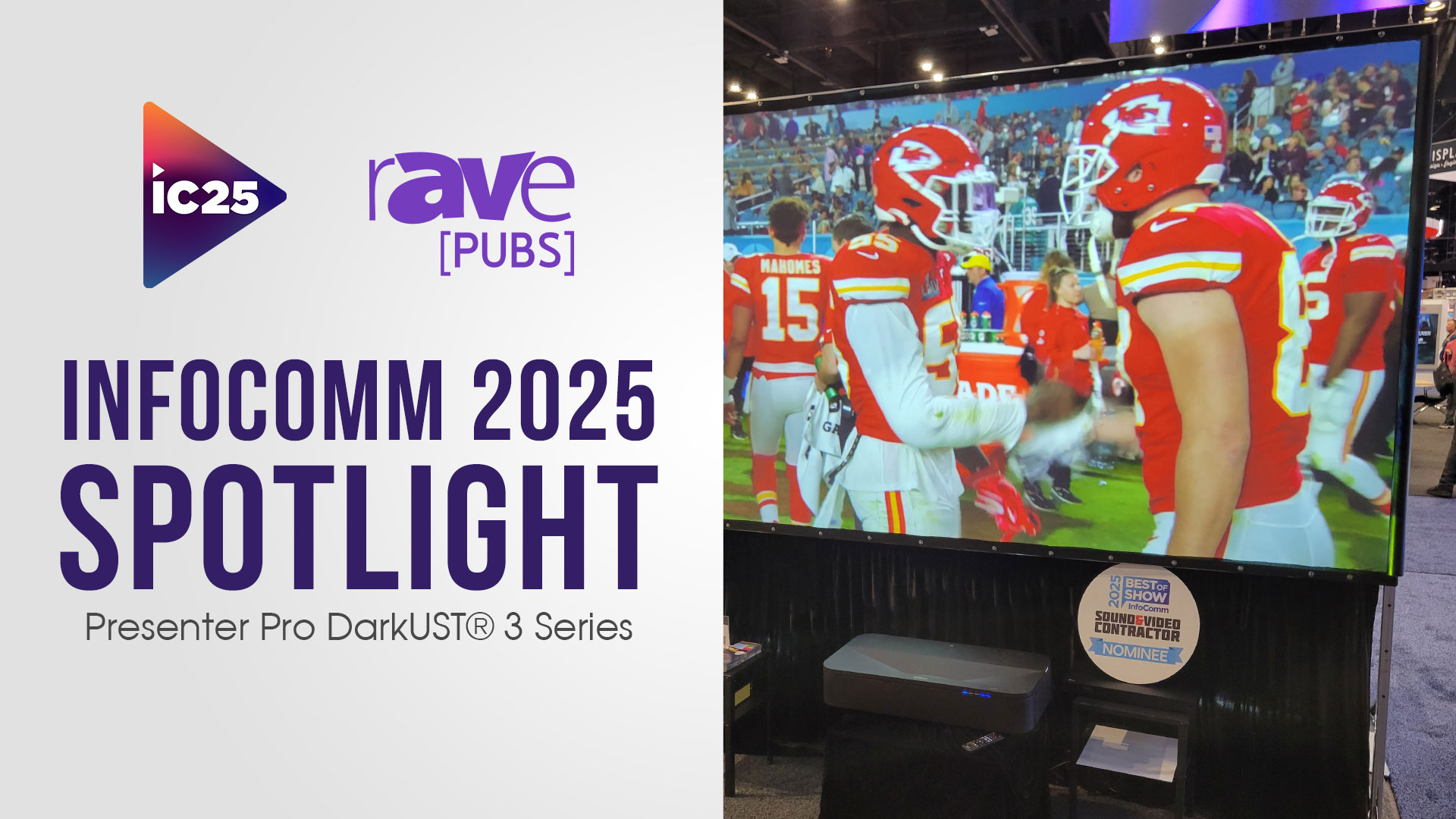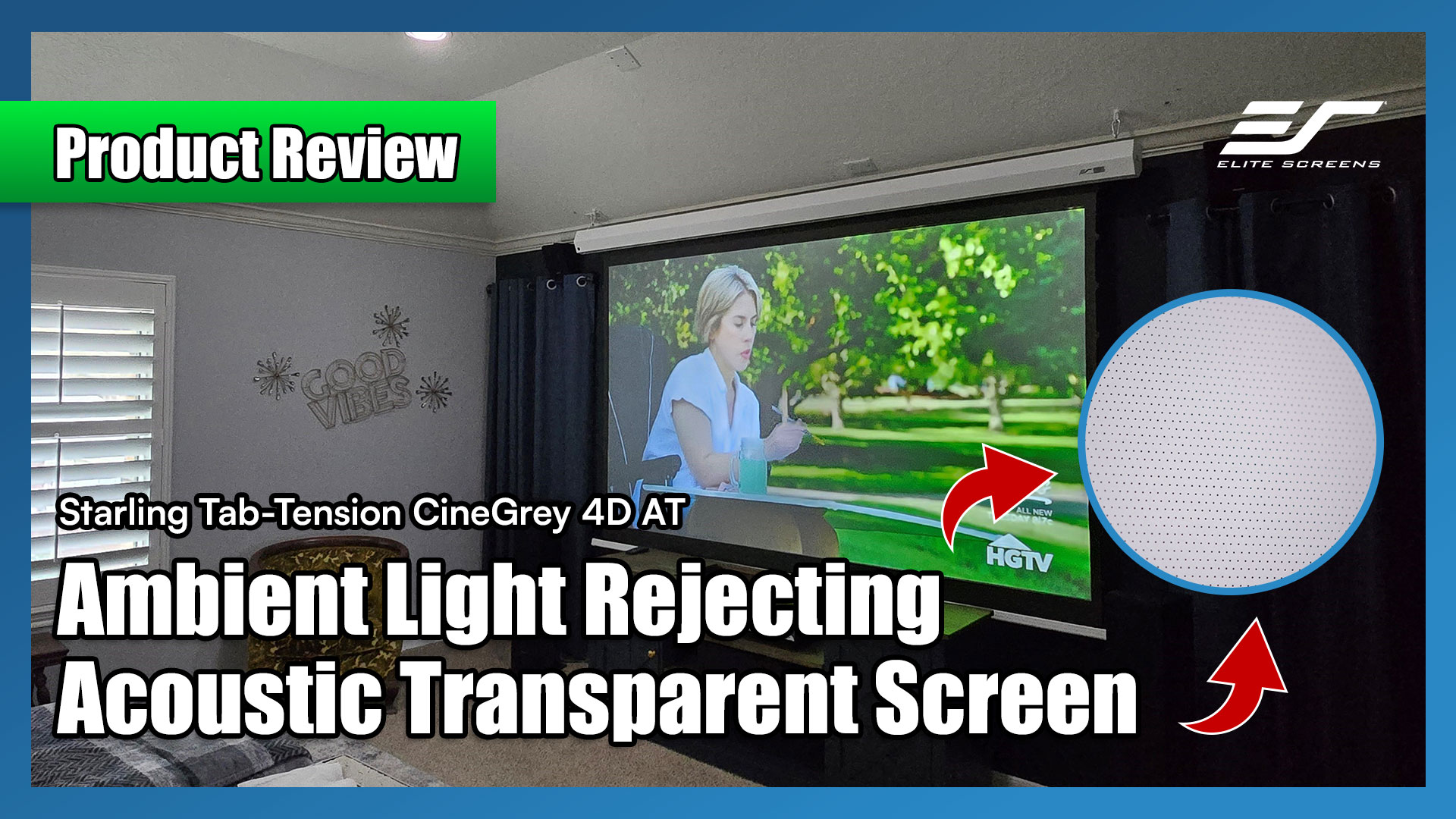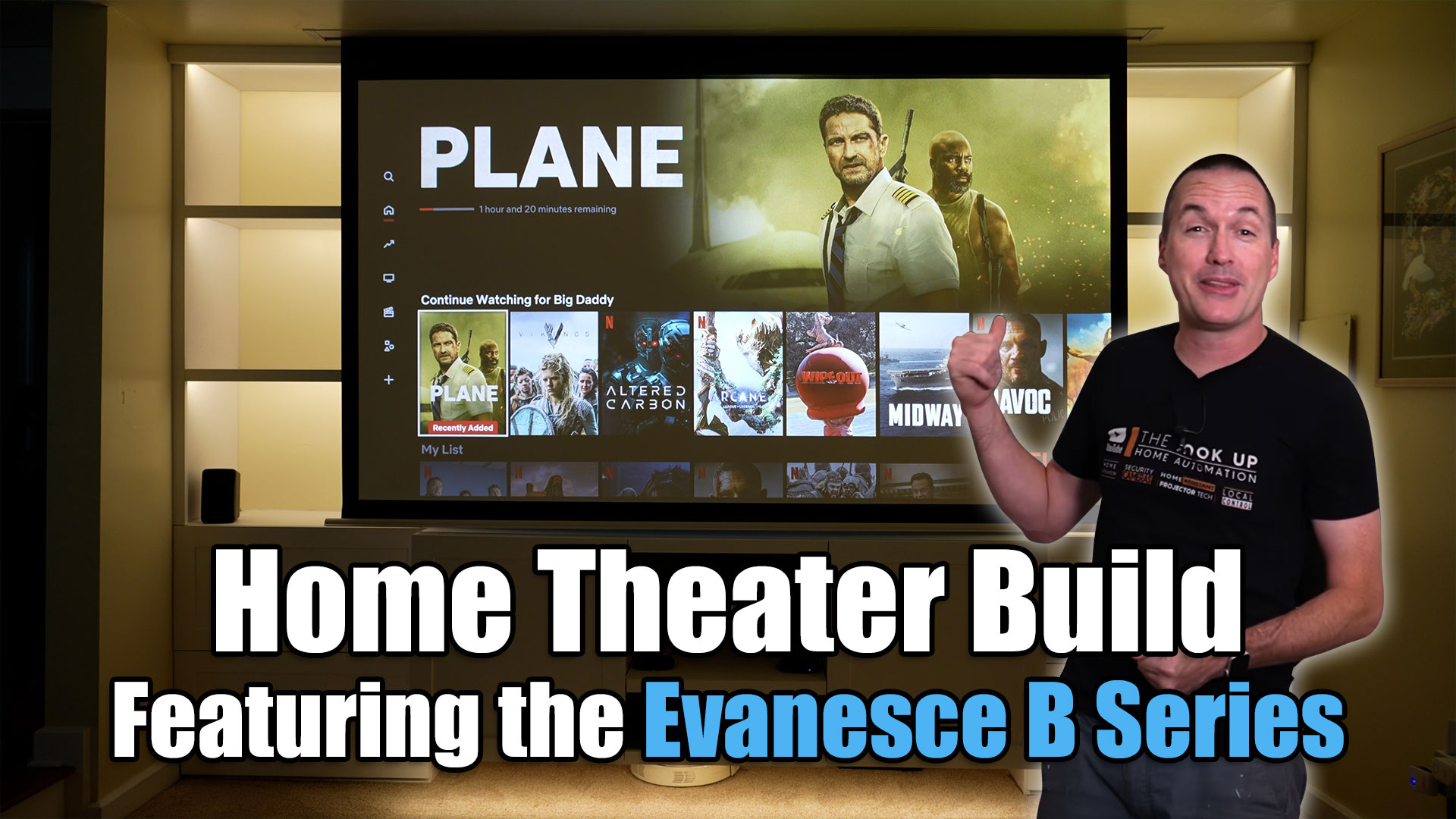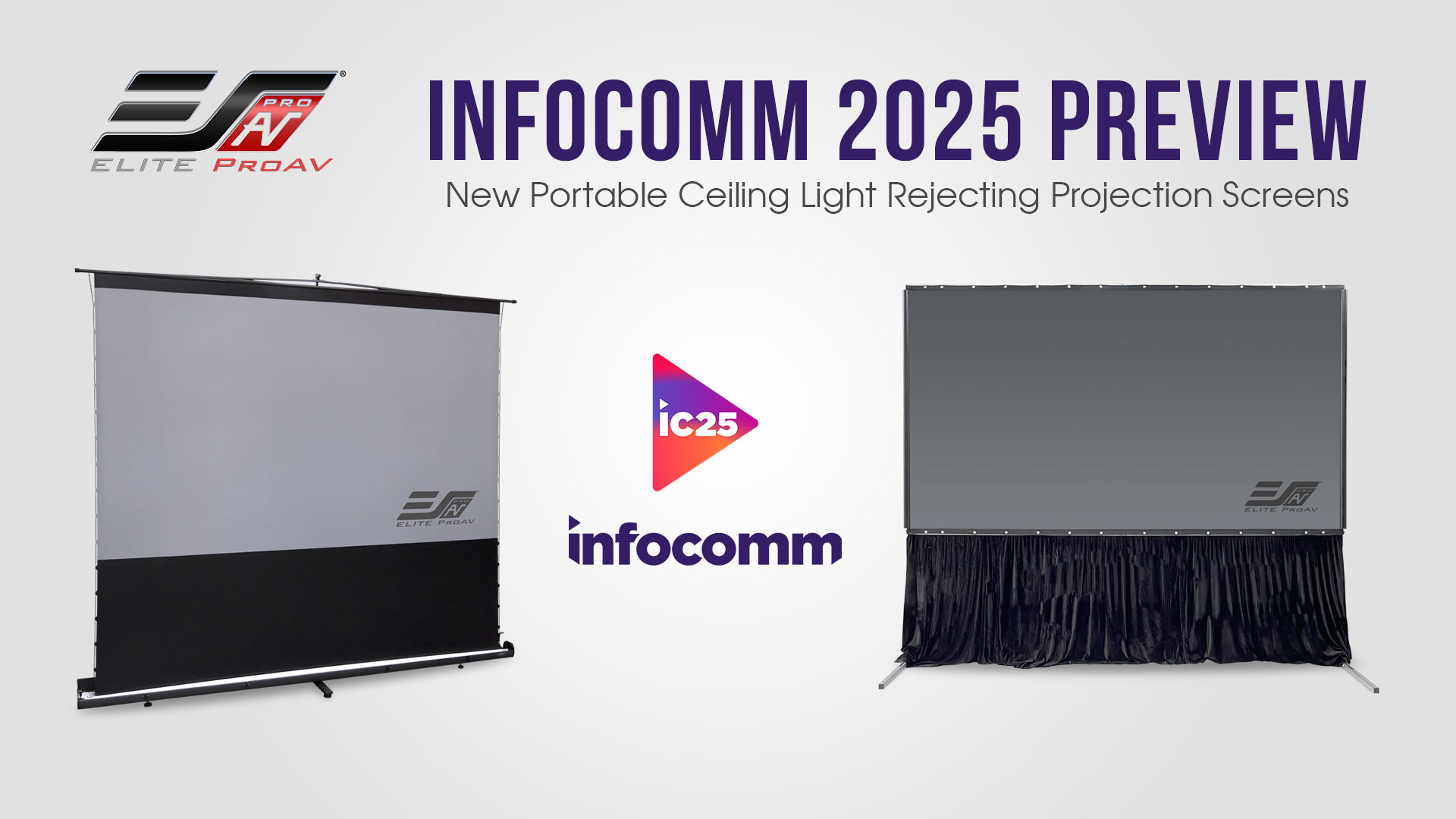How Can the two hottest projection trends (ALR Screens & UST Projectors) be combined? Will any “light-rejecting” material work or Is there more science to it?
By Dave Rodgers (Marketing Manager of Elite Screens Inc.)
Since high-quality ultra-short-throw (UST) projectors first made their appearance, customers have preferred them as a convenient solution over the traditional “long-throw” projection array. UST projectors eliminated the long throw distance between projector and screen so there is no annoyance from foot traffic passing between the projector and screen. Second, getting the big picture no longer requires a large room. Now, a +120”-sized display does not require a commitment of 15-20 feet for the projector to throw. Instead, a larger-than-life picture can virtually be as self-contained as a large flat-panel display but without the enormous installation cost with a project magnitude that will require a structural engineer.
This image demonstrates the value of a ceiling light rejecting “CLR®” 100-120” size projection screen that eliminates the washout effects of ceiling and ambient light. (ALR/CLR).
When combined with a UST projector, a larger-than-life image can be created at the same cost of a flat-panel TV display. Its lightweight construction makes it vastly lighter and less expensive than a flat panel display of the same size.
Ambient light rejecting (ALR) materials are the logical choice for today’s commercial workplace or residential living space. It is just too inconvenient to always make the room dark when you want to see a large projected image. ALR screens allow a projection display to be used more like a TV display in a room with high levels of ambient light. This also includes in-ceiling light sources that are especially prolific in in commercial locations. Ceiling light rejecting (CLR) materials are ALR materials also but are specially formatted to more specifically reject overhead lighting by as much as 95%.
The Illustration on the right demonstrates how the projection screen’s microstructures reflect projected light directly into the viewer’s line of sight. This represents the proverbial “sweet-spot” where the screen, projector, and the viewer’s line of sight are in optimal alignment for the best picture performance. Note how ambient light sources hitting the screen from the same general direction as the projected signal will defeat the screen’s ambient light rejecting properties.
The big question is “how would you combine these into one product?” The simulated discussion below covers the bases as to why some ALR materials don’t work with UST projectors, what materials do work with UST and why.
(Download Training PowerPoint Here) (Click Here for Video)
Q: Why can’t we use ambient light or ceiling light rejecting (ALR/CLR/CLR2) screens with ultra-short throw/short throw (UST/ST) projectors?
A: Ambient light rejecting is a generic term for a variety of materials that prevents projected content from being washed out by incident room lighting from either natural or manmade sources. Each of these materials incorporate some sort of reflective microstructures that allows for projected light to create a superb image while off-axis light is either absorbed or reflected away from the viewers field of vision.
ALR screen materials are typically made for standard “long-throw” projectors. As long as the projector and material are aligned in accordance with SMPTE standards, you will get optimal picture brightness, color-contrast, and black level dynamic range while off-axis light is essentially rejected. Take a look at the previous diagram. Notice that when the projector, screen and viewer’s line of sight are all in alignment, that represents the ideal “sweet-spot” for optimal image performance.
Elite has produced videos and articles on proper video and seating alignment to achieve the proverbial “sweet spot” for picture performance. (See video) The reason why UST or short-throw projectors don’t work with the garden-variety ALR material is because the short-throw and UST projectors spread out their light signal over a comparatively short distance, much of the light is off-axis and will therefore be rejected by the material.
In order to get optimal picture performance from a UST projector, a special angular serriform reflective microstructure had to be created. The next illustration demonstrates how this has been done.
Materials like our Starbright CLR® are specifically designed for UST projectors. Their reflective microstructures are aligned to divert the upward spread light signal from UST projectors directly into the viewer’s field of vision. (See the diagram to the right) At the same time, the “CLR” rejects other forms of off-axis light such as regular room brightness, window light, but especially ceiling light. Notice that the reflective (orange) surfaces will even direct the light signal from a standard throw projector away from the viewer’s field of vision.
Q: How about using any “ALR” (Cinegrey®3D/5D or Starbright CLR, etc.) by Elite with a ceiling-installed UST/ST projector?
A: To expand on the previous answer, notice how the diagram (Example 1) shows that the light signal from UST projectors mounted below the screen (aka. “Tabletop Mounted”) is directed toward the viewer’s line of sight while overhead lighting (Ceiling Light) is either absorbed or directed away from the viewer’s eyes.
As shown in the “Example 1” diagram, ceiling light will be rejected by this material. Therefore, ceiling mounted UST projectors will not work with a Starbright CLR® screen. The angular serriform microstructures will divert such “ceiling light” away from the viewer just as it would for any other type of lighting from above. (See diagram “Example 2”) Theoretically, you could invert the Starbright CLR® material to match with an inverted UST projector that has been ceiling mounted but the alignment will still not likely align properly with the human eye to deliver the ideal “sweet-spot” picture performance.
For more information on the latest innovations on ambient and ceiling light rejecting materials (ALR/CLR) check out the link (here).
